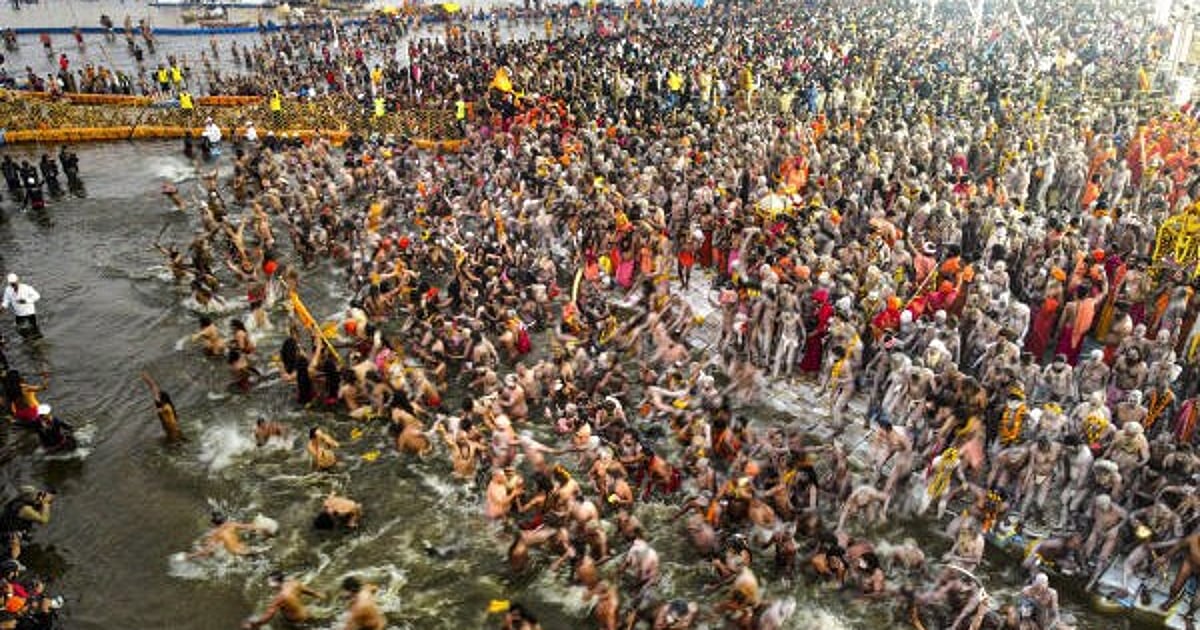 |
|
The Maha Kumbh Mela, one of the largest religious gatherings in the world, witnessed an unprecedented turnout on Basant Panchami. Over 2.3 crore devotees converged at the Sangam, the confluence of the Ganges, Yamuna, and mythical Saraswati rivers, to participate in the sacred 'Amrit Snan' (holy dip). This massive congregation underscores the immense religious significance of the Kumbh Mela and its enduring appeal to millions of Hindus across the globe. The scale of this event is truly staggering, demanding significant logistical planning and resource allocation to manage the vast crowds and ensure the safety and well-being of the pilgrims.
The meticulously orchestrated sequence of the holy dip began with the Panchayati Niranjani Akhara, one of the 13 Akharas (religious orders) participating in the Kumbh Mela. Their entry into the sacred waters marked the commencement of the Amrit Snan, setting the tone for the day's events. Following the Niranjani Akhara, the Juna Akhara and the Kinnar Akhara (representing the transgender community) also took the holy dip, their participation highlighting the inclusive nature of this ancient tradition. Each Akhara, with its unique history and traditions, adds to the rich tapestry of the Kumbh Mela, showcasing the diversity within Hinduism itself.
The participation of all 13 Akharas in the Amrit Snan signifies a momentous occasion, a symbol of unity and shared faith. The meticulous planning and coordination involved in managing such a massive undertaking are a testament to the organizational prowess of the authorities responsible for the Kumbh Mela. Beyond the religious significance, the event also presents a fascinating case study in crowd management, resource allocation, and the maintenance of law and order amidst such immense numbers. The successful execution of this complex operation highlights the dedication and efforts invested in ensuring a smooth and safe pilgrimage for all.
The economic impact of the Maha Kumbh Mela is also substantial, benefiting local businesses and communities through increased tourism and trade. The influx of millions of pilgrims generates significant revenue, contributing to the local economy and providing employment opportunities. However, the event also presents challenges, including environmental concerns related to waste management and the potential strain on local infrastructure. Finding a balance between harnessing the economic benefits and mitigating the environmental and logistical challenges is a crucial aspect of managing such a large-scale religious gathering.
Furthermore, the Maha Kumbh Mela provides a unique opportunity for social observation and anthropological study. The diverse range of participants, their beliefs, and practices offer valuable insights into the complexities of Indian society and religious traditions. The event's ability to bring together millions of individuals from different backgrounds and social strata creates a dynamic social landscape, providing researchers with a rich field for study and understanding the evolving dynamics of faith and community in contemporary India. The social cohesiveness and sense of collective identity demonstrated during the Kumbh Mela are inspiring and deserve further examination.
Finally, the spiritual significance of the Amrit Snan cannot be overstated. For millions of devotees, the act of taking a holy dip in the Sangam is a deeply personal and transformative experience, a chance to cleanse themselves spiritually and reaffirm their faith. The atmosphere of devotion and collective prayer is palpable, creating a powerful sense of community and shared purpose. The Maha Kumbh Mela, with its grand scale and profound religious significance, continues to hold a unique place in the cultural and spiritual landscape of India, captivating the hearts and minds of millions of devotees year after year.
Source: Over 2.3 crore devotees take 'Amrit Snan' at Maha Kumbh on Basant Panchami
